Networking with the wider preclinical modelling community – Meeting report

A great setting for a packed schedule
On the 8th-10th of May 2024, The Royal Society of Edinburgh was the beautiful setting for the first Disease Models and Mechanisms Preclinical Modelling of Human Disease and Therapy meeting.
Organised by our Director Owen Sansom, CRUK Scotland Institute, Congenital Anomalies Cluster PI Pleasantine Mill, University of Edinburgh, Luke Boulter, Liz Patton, and Wendy Bickmore also from the University of Edinburgh, the meeting had the aim to showcase the latest advances in modelling human genetic diseases, including rare diseases, cancer and immune disorders, and highlighting opportunities and challenges associated with ensuring relevant genetic mutations are introduced in multi-modal systems including complex cellular models, model organisms and large animals.
The meeting schedule was packed and included an international set of speakers also giving space for talks by Early Career Researchers (ECRs).
Poster sessions were also planned during lunch breaks and at the end of talks.
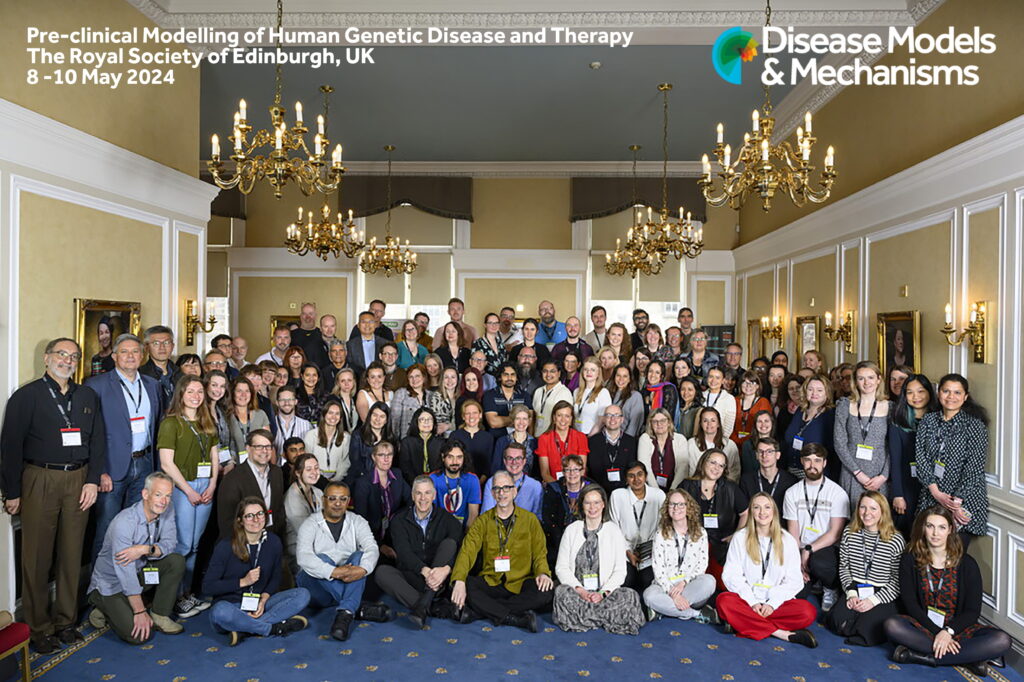
The Network was centre stage
The Network was an integral part of the organisation and delivery of this international meeting, contributing many session chairs, speakers and posters throughout the three days.
Day 1
The involvement of the Network was immediately apparent as Owen Sansom and Liz Patton welcomed delegates to the meeting and Owen chaired the first session dedicated to Cancer Genetics.
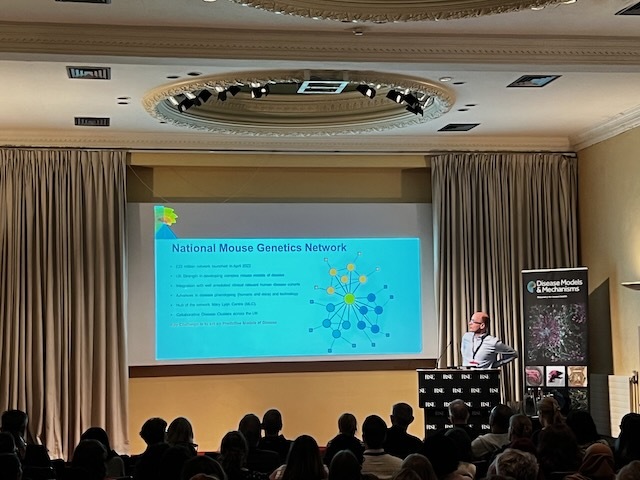
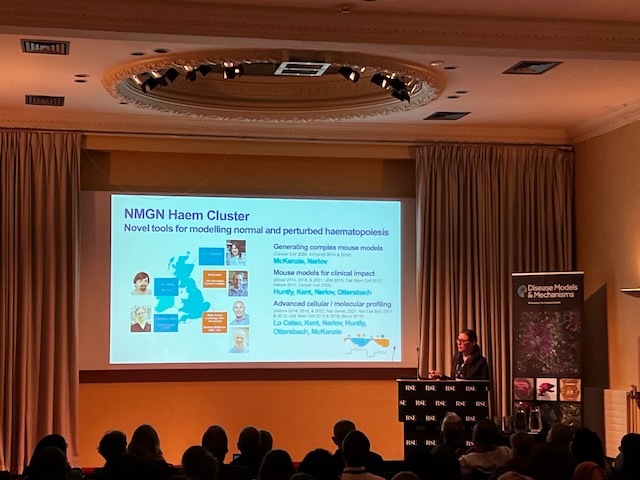
Amongst the distinguished speakers from institutions in the UK, Singapore and the United States, Cristina Lo Celso, of the Haem Cluster, spoke about the interaction between healthy and malignant haematopoiesis within the bone marrow microenvironment.
Pleasantine Mill chaired the Congenital Disorders session that saw Laura Greaves wear her MitoCluster hat and speak about the work she’s doing in developing model systems that can be used in the investigation of the role of mitochondrial DNA mutations in the pathogenesis of human disease. Laura also co-leads the Ageing Cluster. Lucia Luengo-Gutierrez, also from the MitoCluster, delivered a short talk on the characterisation of the retinal pathophysiology of a novel mitochondrial heteroplasmy mutant developed in Michal Minczuk’s laboratory.
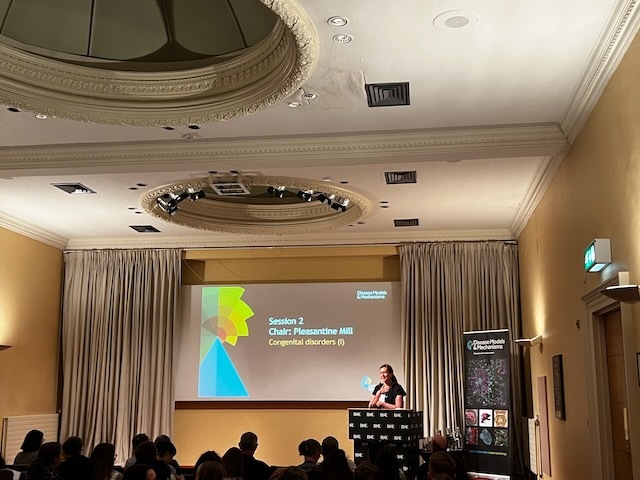
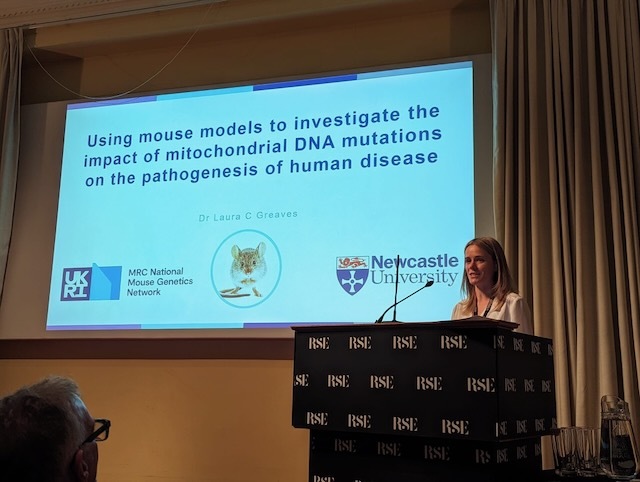
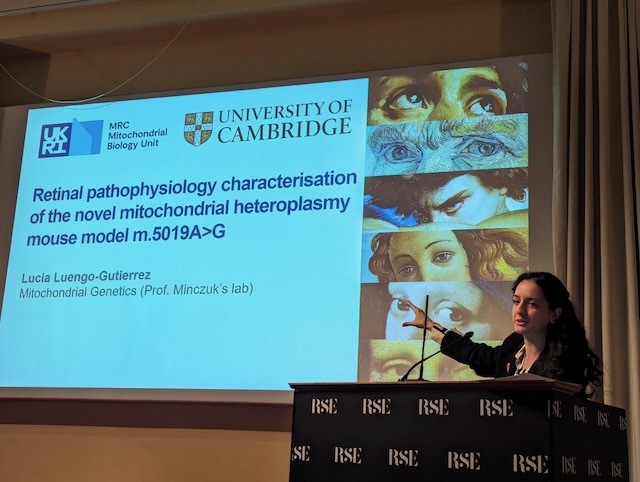
Flash talks by poster authors were a suitable addition to the programme, prompting delegates to a follow-up discussion at the subsequent dedicated session. A drinks reception concluded the day during the poster session with more Cluster and Mary Lyon Centre representation. The displayed work ranged from infant leukaemia to retinal abnormalities caused by mitochondrial mutations, neural tube defects and correct genetic background reporting and phenotyping of mouse models.
Day 2
The second day was kicked off by Wendy Bickmore chairing a session on Neural and Muscular Disorders followed by flash talks from poster presenters before a coffee break. Sara Brown chaired the next session on Inflammatory Disease and our own Fiona Powrie, lead of the Microbiome Cluster, walked us through the process of translating immunology into new therapies for inflammatory bowel disease in a talk that addressed the challenges of moving from discovery to translation and providing some insightful perspectives.
After lunch and more posters, Charlie Gourley from the Institute of Genetics and Cancer at the University of Edinburgh chaired the Translational Cancer Models session, which, among others, featured a talk from our Cancer Cluster co-lead Karen Blyth who spoke about the need to contextualise the complexity of cancer through the use of relevant and holistic mouse models, able to incorporate the many facets of cancer disease inception and progression.
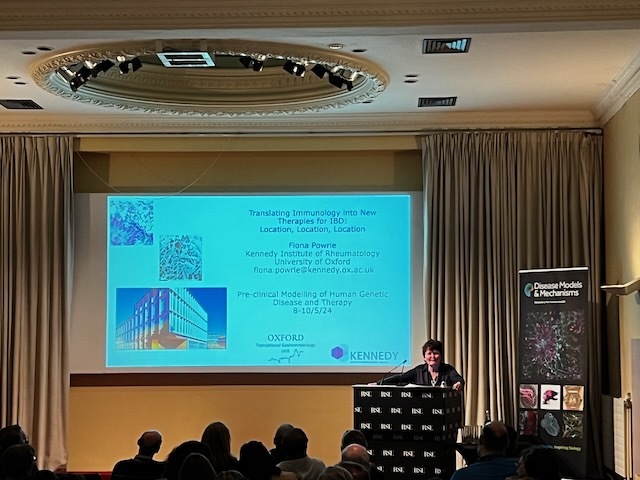
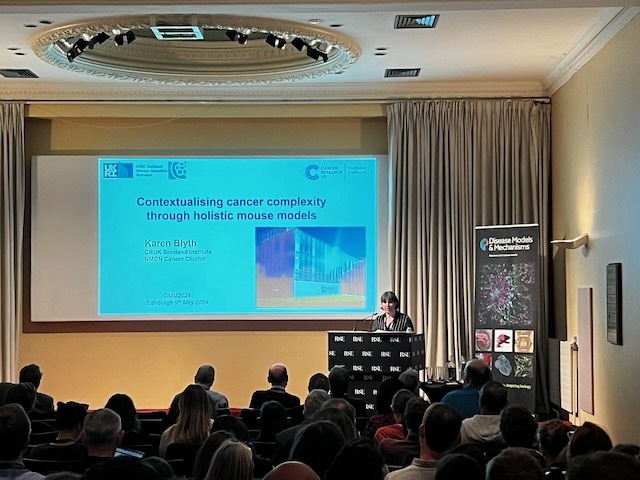
The after-coffee final session was a panel discussion on how to improve the translational impact of pre-clinical research. Sara Wells, Director of the Mary Lyon Centre at MRC Harwell, was a member of the panel, with Ross Cagan, from the University of Glasgow and Emily Sena from the University of Edinburgh. Emily kicked off the discussion, chaired by Pleasantine Mill, with a talk about the quality and bias of the data we produce in our studies and how this has a large discernible impact on outcomes. This stimulated an engaged discussion in which the panel identified further issues and provided possible avenues to improve outputs and positive outcomes.
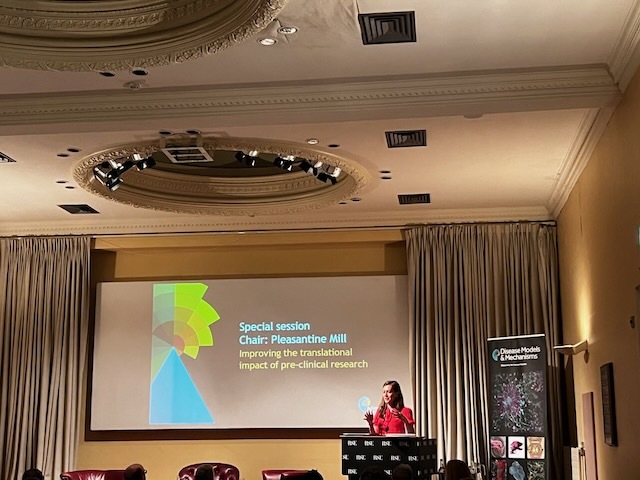
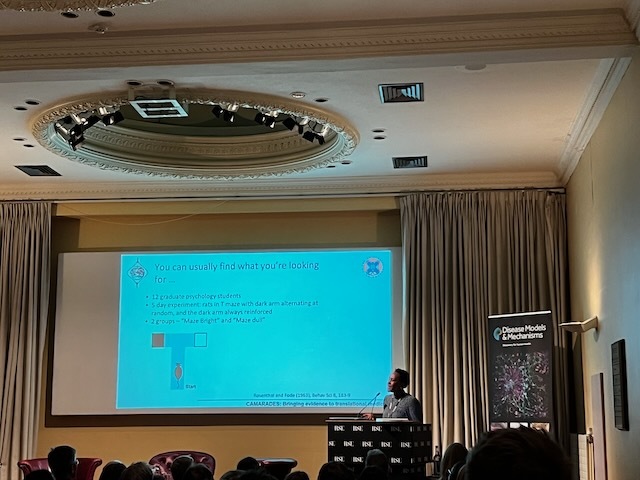
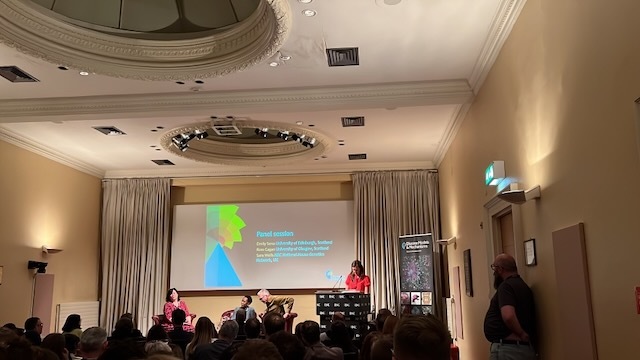
A conference dinner at the Royal College of Physicians of Edinburgh followed and we were treated to a lovely menu in a beautiful hall and access to the most amazing library. Networking and fun were in abundance.
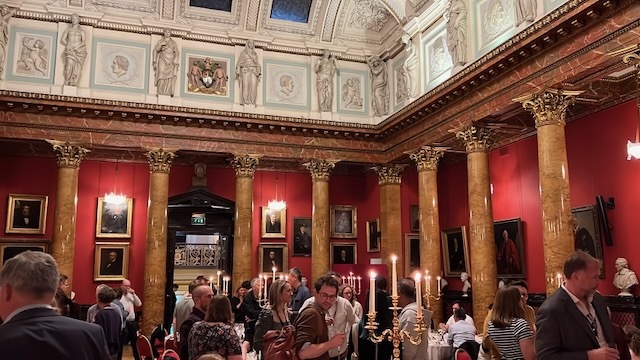
Day 3
The final day began with a second session on Congenital Disorders chaired by Luke Boulter in which Karen Liu, co-lead of the Congenital Anomalies Cluster, introduced us to neural crest defects and the wide range of disorders they can lead to with a clear emphasis on the identification of causative genetic mutations via screening of human patients and work in model animals such as the mouse. The Variant of Uncertain Significance Submission Portal, developed by the cluster was also introduced to the delegates who were encouraged to submit mutations of clinical relevance in developing organ systems identified in their studies.
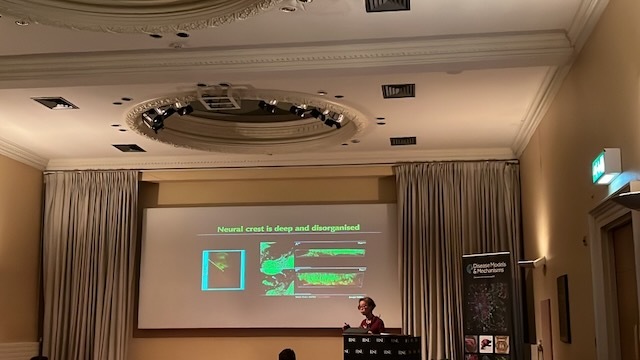
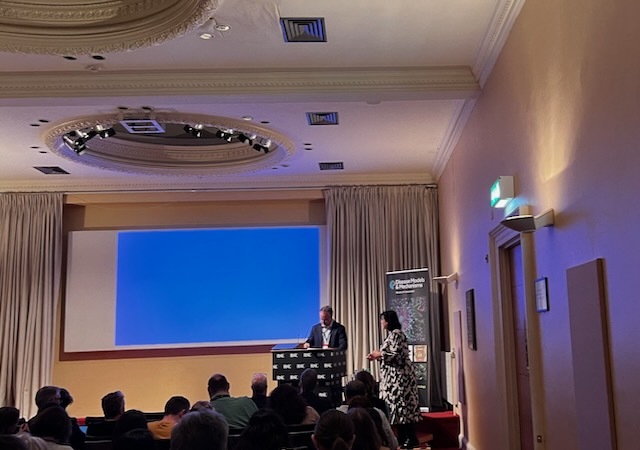
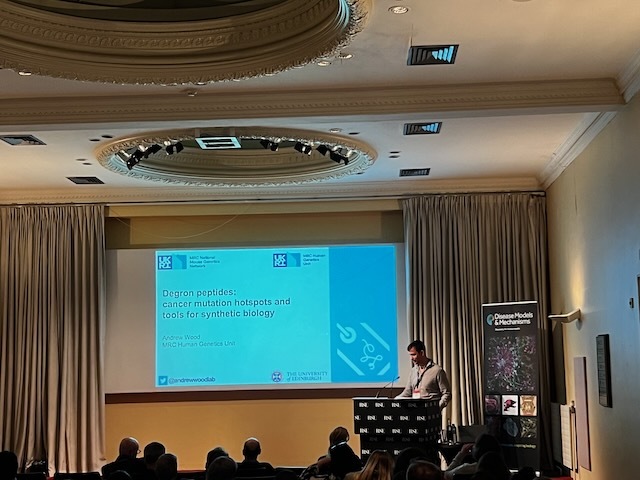
Sara Wells was the chair of the following session on Therapeutic Strategies for Neuromuscular Disease, followed, after lunch, by the final session, chaired by Katrin Ottersbach of the University of Edinburgh and PI in the Haem Cluster, dedicated to Functional Cancer Genomics. In this session, Andrew Wood, lead of the Degron Tagging Cluster, discussed how degron peptides can be cancer mutation hotspots and can act as target validation tools for protein-modulating technologies making use of degron tagging.
Conclusions
The meeting was a resounding success, and we were delighted to be such a major part of both the organising and delivering aspects of an engaging and stimulating occasion. It was immediately apparent from the programme how the pre-clinical sphere involves multiple models, from ex-vivo cell-based systems to the more traditional in vivo models such as fly, zebrafish and mice, all the way to large animals like pigs, all represented at this meeting, and all providing invaluable insights into disease processes and possible therapeutic avenues. It was a privilege to be involved.
The significant space allocated to ECR Flash Talks and poster sessions is also something that the Network wholeheartedly supports in order to stimulate discussion and learning opportunities for those who will be the future of our scientific community.
The Network contributed two of the members of the organising committee, four session chairs, seven main speakers and at least 14 posters over the three days, a great effort.